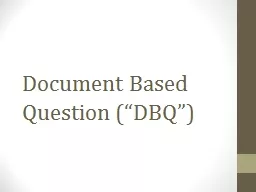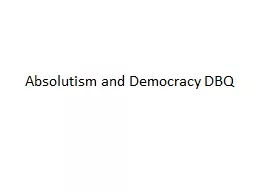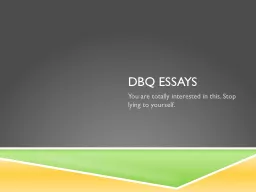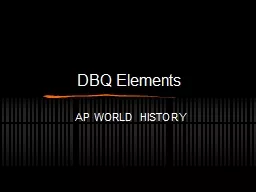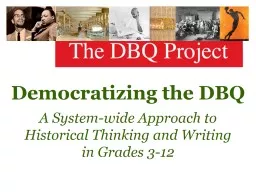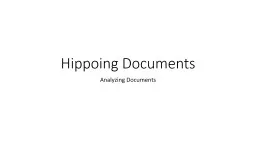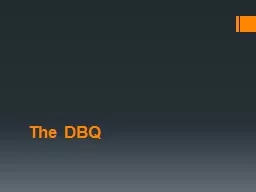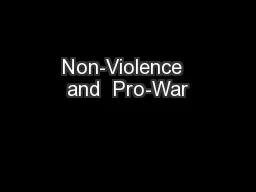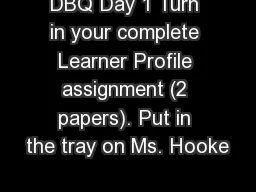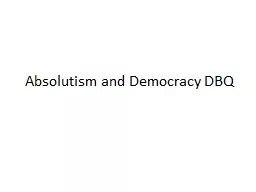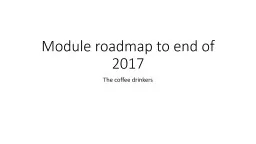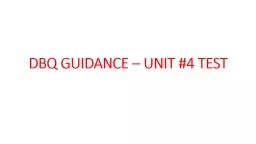PPT-Document Based Question (“DBQ”)
Author : dayspiracy | Published Date : 2020-08-29
What is a DBQ On the AP Exam the Document Based Question is An evaluation of your ability to formulate and support an answer based on evidence from the documents
Presentation Embed Code
Download Presentation
Download Presentation The PPT/PDF document "Document Based Question (“DBQ”)" is the property of its rightful owner. Permission is granted to download and print the materials on this website for personal, non-commercial use only, and to display it on your personal computer provided you do not modify the materials and that you retain all copyright notices contained in the materials. By downloading content from our website, you accept the terms of this agreement.
Document Based Question (“DBQ”): Transcript
Download Rules Of Document
"Document Based Question (“DBQ”)"The content belongs to its owner. You may download and print it for personal use, without modification, and keep all copyright notices. By downloading, you agree to these terms.
Related Documents

